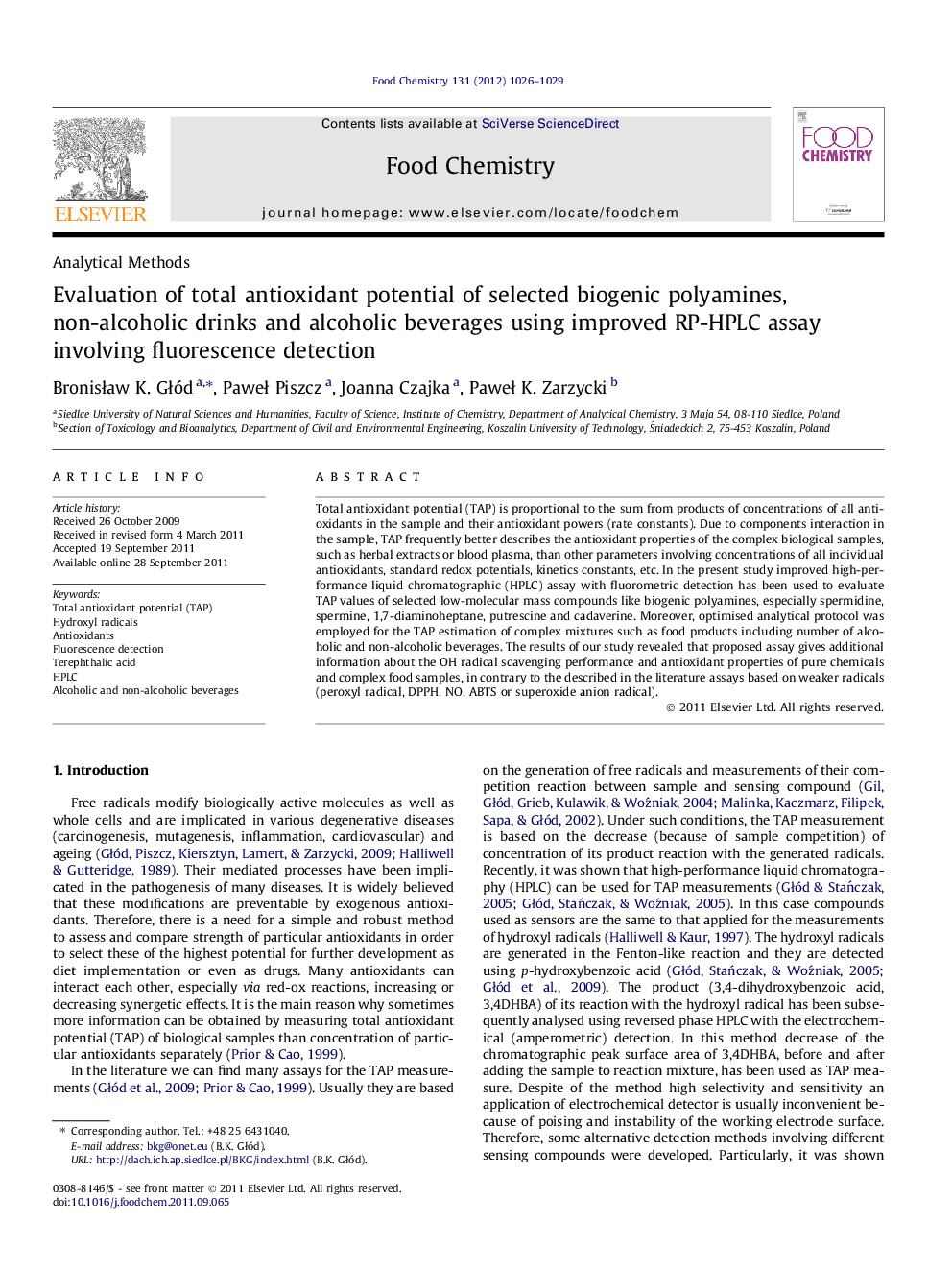| Article ID | Journal | Published Year | Pages | File Type |
|---|---|---|---|---|
| 1188142 | Food Chemistry | 2012 | 4 Pages |
Total antioxidant potential (TAP) is proportional to the sum from products of concentrations of all antioxidants in the sample and their antioxidant powers (rate constants). Due to components interaction in the sample, TAP frequently better describes the antioxidant properties of the complex biological samples, such as herbal extracts or blood plasma, than other parameters involving concentrations of all individual antioxidants, standard redox potentials, kinetics constants, etc. In the present study improved high-performance liquid chromatographic (HPLC) assay with fluorometric detection has been used to evaluate TAP values of selected low-molecular mass compounds like biogenic polyamines, especially spermidine, spermine, 1,7-diaminoheptane, putrescine and cadaverine. Moreover, optimised analytical protocol was employed for the TAP estimation of complex mixtures such as food products including number of alcoholic and non-alcoholic beverages. The results of our study revealed that proposed assay gives additional information about the OH radical scavenging performance and antioxidant properties of pure chemicals and complex food samples, in contrary to the described in the literature assays based on weaker radicals (peroxyl radical, DPPH, NO, ABTS or superoxide anion radical).
► HPLC with fluorescence detector was used as total antioxidant potential assay (TAP). ► Terephthalic acid was used as a sensor, reacting with the hydroxyl radicals. ► Change of surface area of hydroxyterephthalic acid was used as TAP measure. ► TAPs of alcoholic beverages are proportional to the concentration of ethanol.
